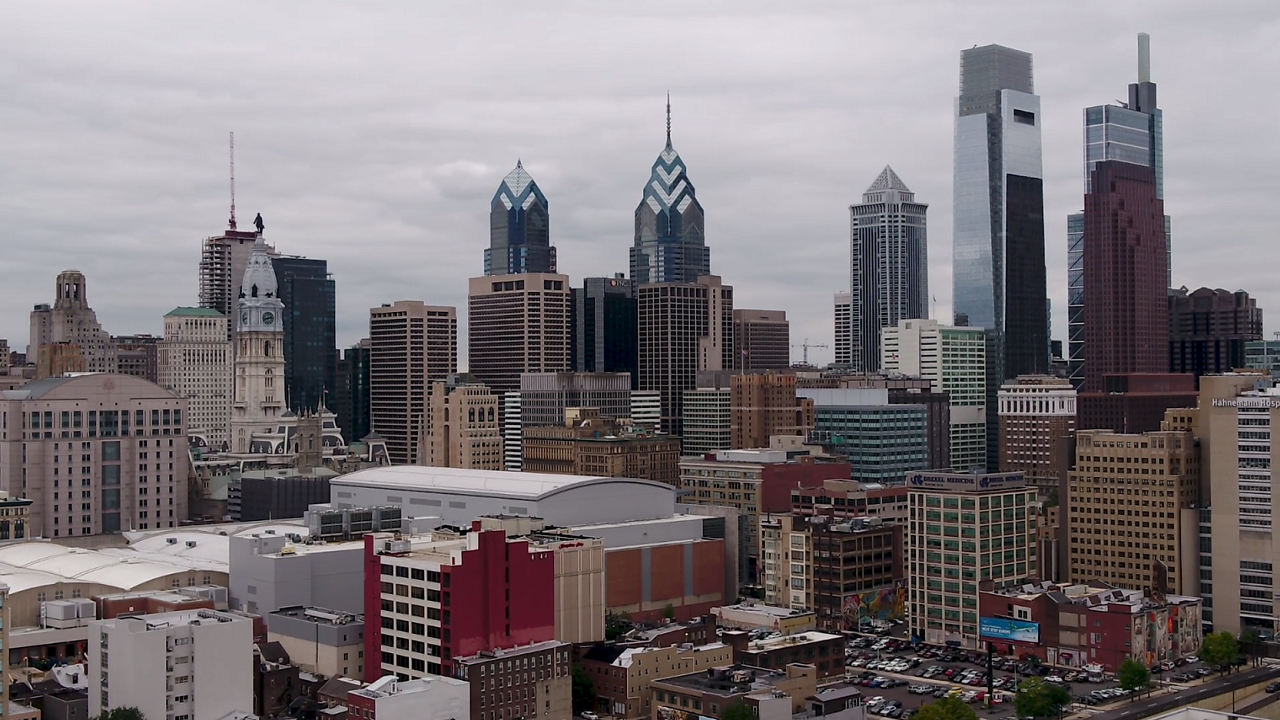Ford says its finally cracked the code on cheap EVs.
The automaker announced plans to build “a family” of low-cost electric vehicles at its Kentucky assembly planrt, starting with a four-door, midsized $30,000 pickup truck in 2027. Ford touted the announcement as its “Model T moment” that will be more streamlined to help bring down costs and put the company on a path to profitability. And it comes at an inflection point for the iconic American automaker, with the company expected to lose over $5 billion on EVs and software this year alone.
The platforms will be scalable and adaptive to a variety of vehicle types, including trucks, vans, and SUVs. The new EVs will be software-defined, meaning they will have operating systems that can improve over time through over-the-air updates. The batteries will have lithium iron phosphate (LFP) chemistries that are more durable, faster charging, and more affordable than its current lineup of EVs. And the manufacturing process will transform from a single assembly line, popularized over 120 years ago with the Model T, into an “assembly tree” with multiple lines starting simultaneously before joining together.
The new vehicle platform and manufacturing process are the product of Ford’s three-year-old Silicon Valley-based “skunkworks” project that the company empowered to create throw out all the old processes and create something new from scratch.
“This is a bold and difficult undertaking to compete with the best in the world,” Doug Field, Ford’s chief EV, digital and design officer, said in a briefing with reporters on Monday. “We started with a blank sheet to fight complexity and do something truly new.”
The company didn’t reveal a new vehicle today — although a prototype of the next-gen truck exists and was recently shared with a select group of factory workers. In a video, workers described the new vehicle as “revolutionary.”
But the company did describe in detail the process that it will use to create the new modular platform. The new “universal” vehicle platform uses 20 percent fewer parts than a typical vehicle, with 25 percent fewer fasteners and 40 percent fewer workstations dock-to-dock in the plant. That results in a fast assembly time of about 15 percent as compared to traditional vehicle manufacturing. And when all’s said and done, Ford estimates that its new low-cost EVs will have a lower cost of ownership over five years as compared to a three-year-old Tesla Model Y.
The new platform will also be less complex, Ford says. The new midsized truck, for example, will have a much simpler network of wires, cables, and connectors that distribute electrical power and signals throughout the vehicle, with the company estimating a wiring harness that’s 4,000 feet (1.3 kilometers) shorter and 10 less kilograms lighter than Ford’s first-gen Mustang Mach-E.
Ford also aims to slash its battery costs by adopting cheaper LFP batteries that eschew cobalt and nickel, two minerals that are among the most expensive to acquire. The price of LFP cells is over 20 percent lower than nickel cobalt manganese (NCM) cells, according to S&P Global. The average price of an LFP cell was just under $60-per-kWh in 2024, versus $100-per-kWh for NCM cells.
The new cells will be prismatic, packed flat in rigid cases and are generally thought to be less complex to manufacture than cylindrical cells. Ford says the battery will be a “structural sub-assembly” that also serves as the vehicle’s floor, creating a low center of gravity with improved handling and increased interior space.
How much more space? Ford says that the new midsized truck will have more passenger room than the new Toyota RAV4 — even before you include the frunk and truck bed. (The 2025 RAV4 has about 98.9 cubic feet of passenger space, enough for five people.) And the bed is large enough to fit a surfboard “and other gear” without the need of a roof rack or a trailer hitch. (That should go a long way toward improving aero and range.)
But all that cost saving and space maximizing won’t make for a boring vehicle, Ford promises. The new EVs will be “fun to drive,” with a 0-60 mph acceleration time of approximately 4.5 seconds, comparable to the four-cylinder Mustang EcoBoost. Still, that’s slower than the 3.3 seconds it takes the Mustang Mach-E GT to accelerate from 0-60mph.
Ford’s executives wouldn’t comment on the estimated range for the midsized truck, nor what other vehicle types would be a good fit. The new platform will have a 400-volt architecture, which is less than what’s currently offered by Hyundai and Kia EVs.
Farley’s reference to a “Model T moment” also applies to the revolutionary way in which that original vehicle was manufactured. Ford says that it has taken the traditional, linear assembly line and transformed it into an “assembly tree.” Instead of one long conveyor, three sub-assemblies run down their own lines simultaneously before joining together at the end, the company says. Using this method, a large single-piece aluminum unicasting can replace dozens of smaller parts, enabling the front and rear of the vehicle to be assembled separately.
Ford says its next-gen vehicles will come in three parts: the front, the rear, and the middle, which is essentially a structural tray for the battery. And while other automakers have been known to use large-scale castings, including Tesla’s gigacasting process, Ford insists that its approach will be unique.
“So it really goes way beyond a typical modular architecture that existing manufacturers have out there,” Field said.
Ford also aims to improve the ergonomics of its workers, with a process that involves less twisting, reaching and bending. That includes the use of more robots and automation — though Ford declined to compare it to its current manufacturing process.
“This is a dramatic step function reduction,” said Ford’s chief operating officer Kumar Galhotra. “Now, some of that will be automation, but a lot of it is just built into how the vehicle is designed.”
Ford says it will invest $2 billion in new money in its Louisville, Kentucky assembly plant, where it will assemble the new midsized truck. That’s part of a broader $5 billion investment to create or secure 4,000 jobs, including at its BlueOval Battery Park in Michigan.
The process will require fewer workstations — and fewer workers. Ford says that right now it has 2,800 hourly workers in Louisville, along with 200 salaried employees. The universal EV platform project will only require 2,200 hourly workers — or 600 fewer workers than the present levels. Some workers may transfer to other, nearby facilities, while others may accept buyout offers. Ford says it does not anticipate any layoffs as result of this project.
The next-gen “universal” EV platform is the product of Ford’s Silicon Valley-based skunkworks team helmed by Alan Clarke, executive director of advanced EV production and a 12-year veteran of Tesla. The team is based in Irvine, California, and is comprised of engineers from Auto Motive Power, or AMP, an energy management startup acquired by Ford last year. AMP founder Anil Paryani holds the title of executive director of engineering at Ford and overlapped with Clarke at Tesla for several years.
Clarke said that the new manufacturing process will give factory workers everything they need in the form of a “kit” that arrives to their workstations. He predicted that this will be “profound” change in the line-side storage and production layout behind each worker that will result in 84 percent less reaching over the fender and 63 percent less sitting in the vehicle installing parts.
“Ultimately, this is a revolution in how we build our products, driven by and for our incredible team,” Clarke added.
The concept of a cheaper EV is crucial to Ford’s future. The company is expected to lose up to $5.5 billion on its electric vehicle and software operations this year, similar to last year and a sign of the severe difficulties in cutting costs on battery-powered models.
Ford has scaled back some of its EV plans as demand for the company’s plug-in vehicles has slowed and some dealers have balked at the costly infrastructure improvements necessary to sell them. The company said in 2023 that it would delay $12 billion in investments. And earlier this month, Automotive News reported that Ford has again delayed its plans for a full-sized, electric truck, that is meant to be a follow-up to the F-150 Lighting, until 2028. It also pushed back its plan for a next-gen electric van. Ford needs to start making money on its models if it wants to compete, not only with Tesla and GM, but also Chinese automakers like BYD.
President Donald Trump’s recent actions haven’t helped the EV industry, either, as the administration plans to roll back EV tax credits this September. Trump’s tariffs have also hit automakers hard, with Ford saying it expects the duties to shave $2 billion off its annual earnings.




![13th Sep: How to Train Your Dragon (2010), 1hr 38m [PG] – Streaming Again (7.05/10)](https://occ-0-748-999.1.nflxso.net/dnm/api/v6/Qs00mKCpRvrkl3HZAN5KwEL1kpE/AAAABWNZOlN0JTMDNMqT1W_Vvhz70Ir1zyS7OJlFx4XI3YMC5bWXOp4nLkkW7AGvXTJdZ-QUZqJKmYUW04mmeka99Dq1X336gowzPHCe.jpg?r=548)












